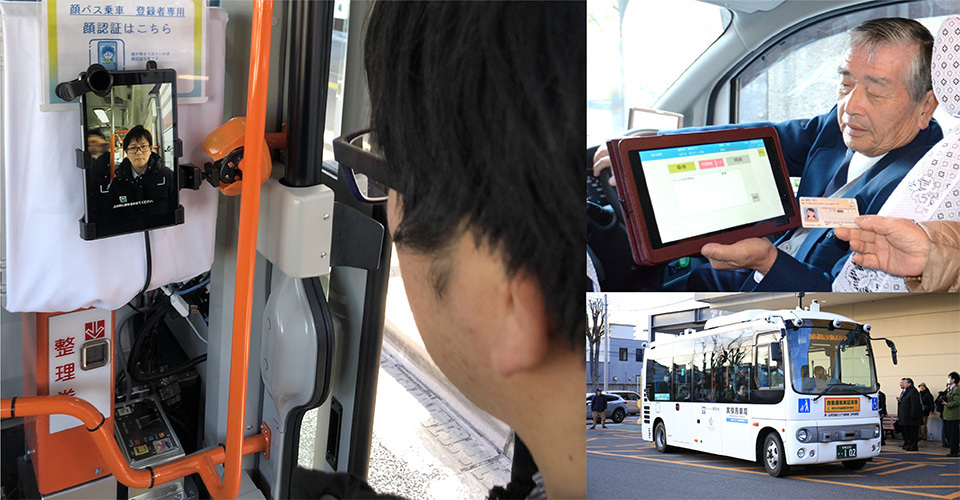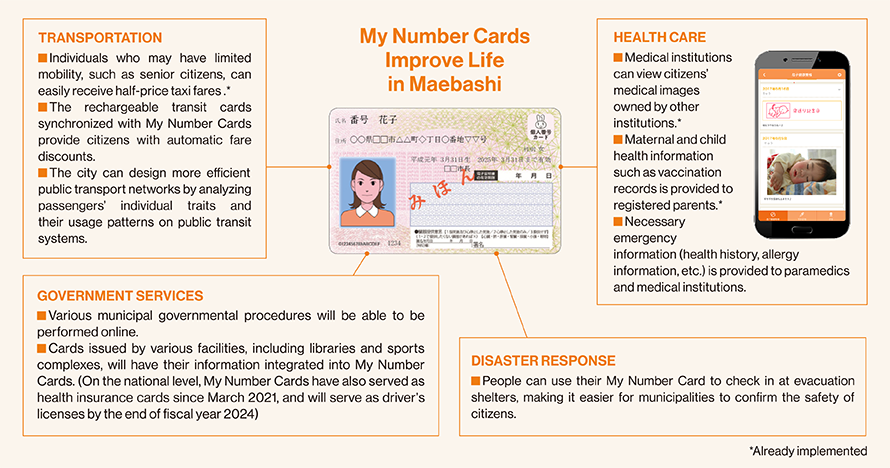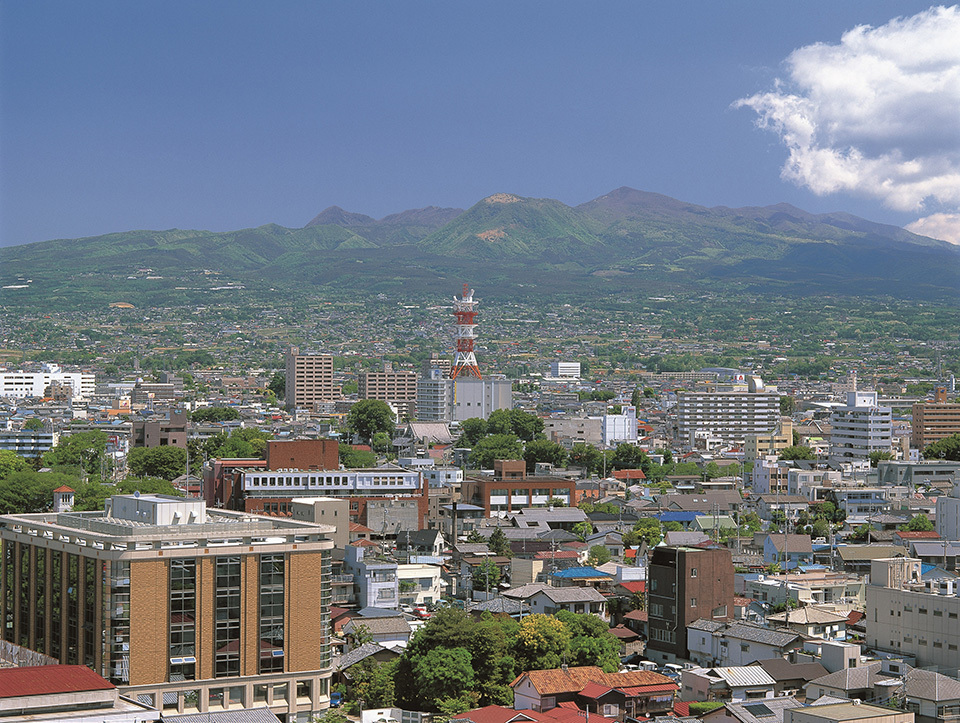How is Maebashi City in Gunma Prefecture digitalizing public services with Individual Number Cards (“My Number Card”) to better residents’ lives?

A city-specific initiative in Maebashi offers half-price taxi fares to passengers who may have limited mobility; they use it by simply scanning their My Number Card when getting in a taxi (top right). The city is also trialing autonomous buses that are linked to the cards and require only facial recognition to ride.
As the world reels from the severe impact of COVID-19, the digitalization of government and society has become increasingly essential for communities to enhance the lives of their residents while creating new industries and expanding the economy. Prime Minister Suga’s administration considers this an issue of top priority, and has crafted policies to that end. In September of this year, the Japanese government will set up a digital agency to lead the digitalization of the entire country. At the heart of the initiative is the Individual Number Card, also known as “My Number Card,” on which a personal number assigned to all persons residing in Japan is displayed, along with their name, address, and photo, and which contains an IC chip with digital certification. Due to its strict safeguards for personal data, the card can be used for processes that require highly confidential online verification, from governmental administration to the opening of bank accounts, leading to its applicability in various situations. Some local governments have already started some ambitious experiments with the card.
The local government of Maebashi City in Gunma Prefecture, located in the Kanto region, has been an early adopter of the My Number Card for use in public transit systems. For example, Maebashi has developed a city-specific initiative that supports individuals who may have limited mobility, such as senior citizens, by offering them half-price taxi fares. To get the discount, all they have to do is place their My Number Card on a tablet inside the taxi. The system had used paper coupons when it was first created in 2016, but the current version utilizing the My Number Card was introduced in 2018 to lessen the heavy administrative burden on the city and taxi operators. After the updated system was launched, a survey of users revealed that 86% of them found it convenient. Around a total of 20,000 passengers now take advantage of it monthly.

The city is also piloting the use of the My Number Card as part of a MaaS (Mobility as a Service) project that combines buses, taxis, and other means of transportation into a single service. By synchronizing rechargeable transit cards and a facial recognition system with the data on My Number Cards, the project is experimenting with new services to provide city residents with automatic discounts and allow them to ride buses simply through facial recognition. The end goal is to create a community where people’s day-to-day activities can be achieved more conveniently even without owning a car. Many rural areas in Japan commonly face the issues of an aging population along with a reliance on privately-owned vehicles, and that background provided the impetus for the experiment. In the past, given the limited financial resources and personnel in regional cities, it had been difficult for effective measures that address these problems to be devised. MATSUDA Keita, head of the information policy department at Maebashi City Hall, says, “Most cities in outlying regions have a shortage of funds and a declining population. For such municipalities to survive in that situation, not only should municipal services be made more efficient, but value-added solutions must be brought about. In that sense, digitalization is a requirement. Such cities can indeed reduce the cost of the government services they provide while enhancing convenience for their citizens.”
Maebashi also utilizes the My Number Card to provide maternal and child health information, including the status of vaccinations. In addition, it uses the cards to allow medical institutions to view scans and other such medical images owned by other institutions. The city is considering using the cards for emergency medical care and disaster response in the future as well. Those initiatives should usher in true well-being in a broad, well-rounded sense—something that sheer economic development tends to forgo. Matsuda says, “Besides streamlining government services, our goal with digitalization is to give people more leeway—additional time and freedom—to enjoy their lives more fully.” The Maebashi Model could be the start of a new wave of revitalization in Japan’s outlying regions, both socially and economically.

Maebashi, about 90 minutes from Tokyo by train, is a major urban area of 300,000 people. Although an agreeable place to live—with warm weather and plenty of greenery—the city is dealing with an aging and shrinking population.


